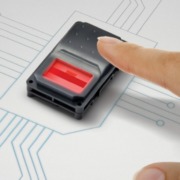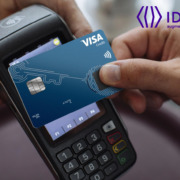Biometrics are shaping up banking industry through payments
Nowadays, the average use of fingerprints per person on smartphones are 52 times a day, in another pace, millennials use it 152 times a day. Biometric authentication has became a normal function in our daily lives and routines.
To unlock the smartphone, to verify a bank transaction among other applications, turns the biometric authentication an easy and fast method, making the enter a PIN old school. Due to Apple who made the insertion of biometrics back in 2013, allowing user to unlock the mobile by a simple touch.
The most used and widespread biometric is Fingerprint (63%) followed by Facial at 25% and Iris at 20%.
Biometrics seeping into payments
The following year after the insertion of biometrics on phones, Apple launched the ApplePay, what turns biometrics authentication in payments a convenient and safer way to our everyday transactions. This familiarization increased the acceptance of this method, what makes 82% of users ready to replace their PIN code with a fingerprint to card payments.
Perceived as a good thing to assure high security level, biometric usage for card payments is naturally stronger in countries where contactless payments are highly adopted. As contactless are capped at 30 EUR per transaction, 72% of users do want this limit to be rethought. Hence biometrics can offer a security level and also go beyond the current limit of transactions.
Biometric authentication enabling financial inclusion
India is on the top of the list for the use of biometrics. The technology is so widespread that government created a 1.3 billion users’ database with iris, facial and fingerprints templates. Citizens can benefit from different types of services as withdrawing cash without leaving home, how? Postman verify their identity by an handhold mobile device and once it’s done cash is handed out and the bank account is debited. This method is used by rural citizens which gives them a year-light of convenience with high security.
Other use case for developing countries is the distribution of social welfare payouts by means of a biometric card. Aided population would have to authenticate the card at a POS terminal and right away receive the pension.
This way solves two problems: unauthorized persons accessing the pensions and pensions being distributed to deceased citizens and the most important, the need to attend physically to receive the payout, sometimes eligible citizens are located away from city centers and urban areas.
A bright future for biometric authentication in payments
In 2020, biometric authentication was about 1.2 billion consumers and it will raise up to 2.6 billion by 2023. It may be possible in a near future to pay through our biometric features in a car. The fast development of biometric technology will provide massive changes in worldwide consumption, by letting for example PIN code antiquated and taking over authentication for payments cards and other services.
Sources: https://www.idemia.com/news/biometrics-shaping-our-everyday-payments-2019-12-11
1 Variety, Are Americans Addicted to Smartphones?, 2019
2 Inc, The Surprising Reason Millennials Check Their Phones 150 Times a Day, 2017
3 Global study independently led by “Data 2 decisions” (Dentsu Aegis Network), encompassing 2,800 people in 11 countries, 2018
4 Goode intelligence, Biometric payments come to age




